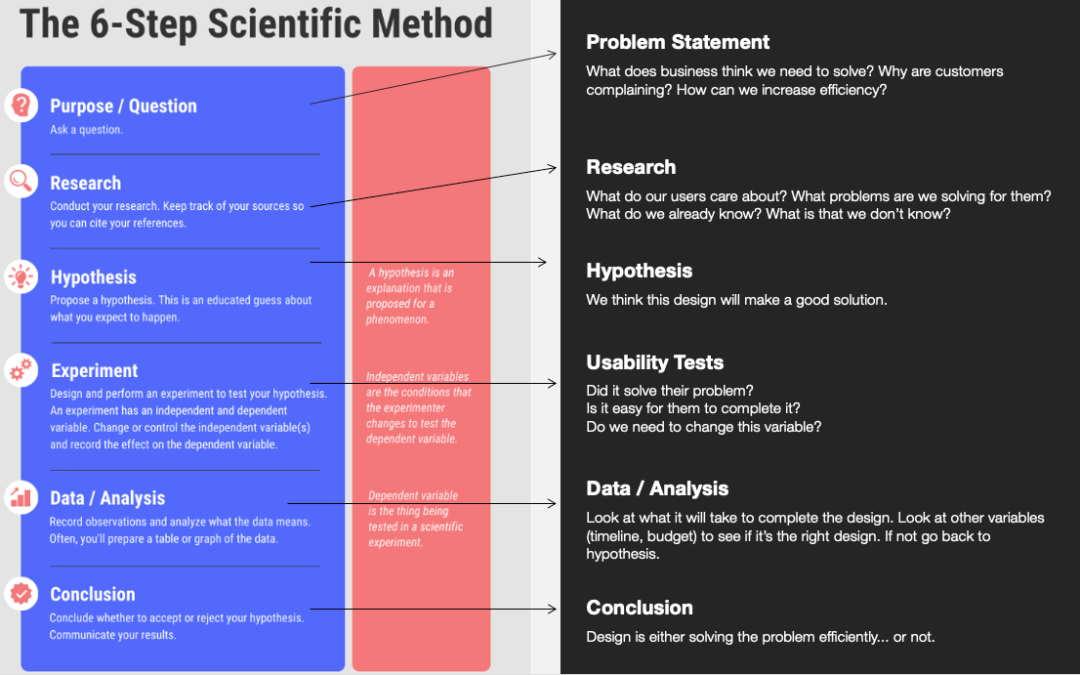There’s lots of discussions and diagrams about the UX process, one of the most popular being the double diamond.
What I’ve found that all of these have in common is the scientific method. Understanding the user (research), creating solution (hypothesis), usability testing/validation (experiment), and analysis (understanding results). Considering the User Experience (UX) is a social science, it makes sense that we follow the method.
So what does that look like in the corporate world?
Step 1: Purpose / Question
More often than not this is a business problem or desire. They will ask how to increase conversions, or reduce customer support calls, or that customers keep asking for X, Y, Z.
Our first job as UX designers is to take the busines question (ex: how do we increase sales) into a user question (ex: what do I need from this product to meet my end goals?)
Step 2: Research
Like any good scientist, you look at the data that is already there (so you’re not starting from scratch each time). What is the current state? What does the system analytics tell us about user behavior? Are there mental models and patterns already established for this type of product?
Then in many cases, you must also ask your user what they’re goals and tasks are for this product or task flow. We have to look at the whole picture to understand what variables need to be tested to confirm or deny the hypothesis we create.
"Fail Fast" Note
Some teams want to move quickly and fail fast, so they skip this research. Which means they don’t learn from the projects/products who have already made mistakes they can learn from. They have to repeat multiple experiments or put out not-great products to measure (slowing sales because of bad quality) to learn errors…which leads to tech debt…which leads to not being able to move or fail fast in the future.
Step 3: Hypothesis
Our hypothesis is our design. We say, “I think this is our solution to the problem.” Like many experiments, we may have a few variables to test to ensure it is the correct hypothesis (like a/b testing or different interactions), but overall the task flow should be 80% there based on previous research.
Step 4: Experiment
This is the evaluative / summative research – usually in the form of usability testing. We test the different designs and/or variables to understand what makes the most effective, efficient, and engaging solution. This could also be the ‘measure’ part of a ship + measure solution.
Step 5: Data / Analysis
After looking at all the data collected, UX can say this solution will work. Then the team must analyze the cost / benefits of the proposed design against budget and technical difficulty to see how many of the variables can be built – or you all find that it can’t be done, so you have to move back to the hypothesis step.
Step 6: Conclusion
Once a design is decided upon, your partners can build it for your customers. And like any good scientist, you keep track of your metrics so you know when (or how) to update your hypothesis in the future.
Related Posts
When Customers Want ‘Faster Horses’ That Means We Need More User Research (Not Less)
I once had a product person tell me there's no reason to ask customers what they want because (using the quote...


